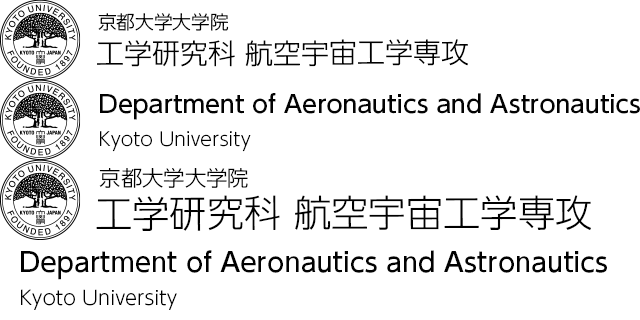Philosophy
Now, only 100 years after the Wright brothers in the US made the first powered human flight in 1903, there are gigantic aircraft which can carry nearly 1000 people up to a distance of 15000km. In space, after the first human spaceflight in Vostok 1 of the Soviet Union in 1961, Apollo 11 from the US carried men to the moon for the first time in 1969. Currently, the international space station is planned to be completed in 2010, and numerous space probes daily send valuable information on the planets in the solar system.
Although man's long-held dream of flying has now been substantially achieved, space remains an eternal frontier for human beings. To develop this frontier, we require science and technology, essentially of mechanical engineering, that are effective under environmental conditions of gravity, pressure and temperature utterly different from those at the surface of the earth. Also, the speed and the flying distance required of spacecraft are extremely large compared with conventional aircraft; the scales of space objects may be inevitably enormous, or they may sometimes be required to be as small as possible. Furthermore, the reliability of systems used in space is most important in any applications of the above technologies. Consequently, aeronautics and astronautics should be based on science and technology with limiting conditions unfamiliar to us.
The Department of Aeronautics and Astronautics consists of the following four fields: interaction between spacecraft or aircraft and their environment; propulsion and energy; materials and strength of structures; and systems and controls. To achieve real progress in these fields, we assign the highest priority to fundamental science and engineering. In other words, the first mission of the department is to carry out fundamental research not only limited to aeronautics and astronautics but also aimed at opening up advanced engineering to new possibilities. The second mission is to foster promising researchers and engineers who have full command of deep knowledge and who can create original ideas.
In view of the above-mentioned missions, in the educational program, we particularly focus on basic subjects in mathematical physics in addition to engineering. Simultaneously, the emphasis of our education is laid on the enhancement of the leadership and internationality of our students, because many large projects in aeronautics and astronautics, one of the “big” science and engineering fields, are often conducted in collaboration with many domestic and/or international organizations.
